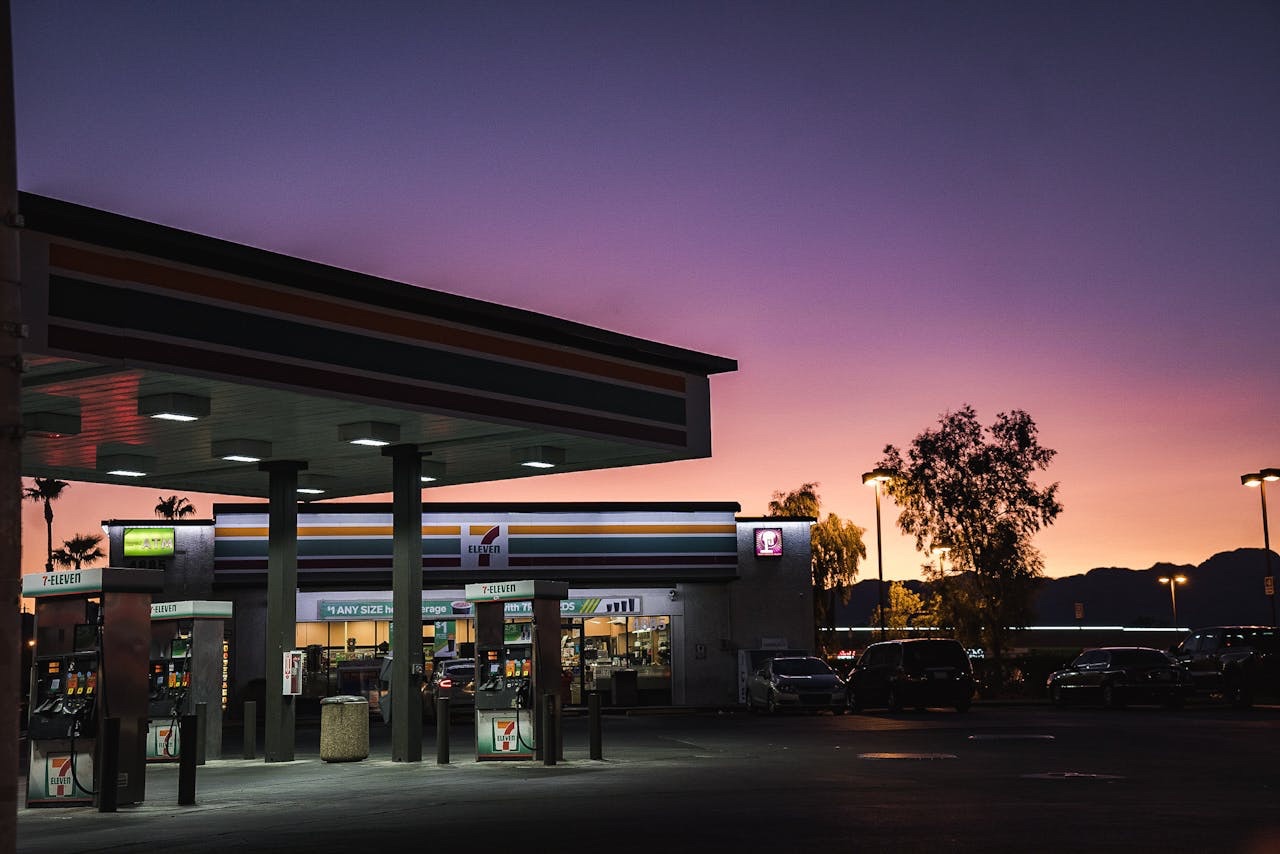Fast, easy, surprisingly good – convenience stores with culinary ambition are on the rise. 7‑Eleven, once synonymous with quick snacks and soda, is planning more than 1,300 new hybrid locations in North America by 2030. The strategy: a deliberate blend of quick-service restaurant (QSR) and retail, featuring branded food concepts like Raise the Roost and Laredo Taco Company. And the numbers speak for themselves: +57% customer traffic, +36% sales, +18% daily revenue. This transformation signals a deeper shift: the lines between foodservice and retail are blurring – and convenience is becoming an experience.
Trend Snapshot / Factbox
| Aspect | Details |
|---|---|
| Trend Name | Convenience-Foodservice Hybrids |
| Definition | A combination of classic convenience store and quick-service restaurant offerings |
| Key Components | QSR menus, branded food, modular formats, self-service models |
| Distribution | Primarily North America; pilot formats in urban hotspots |
| Exemplary Locations | 7‑Eleven featuring Raise the Roost and Laredo Taco Company |
| Popular Hashtags | #QuickEats #FoodOnTheGo #NextGenConvenience |
| Target Demographics | Gen Z, urban professionals, mobile consumers |
| Wow Factor | Fast, fresh, brand-driven – food with no detour |
| Trend Phase | Growing, on the cusp of mainstream adoption |
From Gas Station to Taco Bar: The New Convenience Concept
What used to be a pit stop for gum and coffee is now a fully-fledged food destination. The convenience store is evolving into a modular foodservice space – flexible, scalable, and increasingly digital. 7‑Eleven is leading this shift aggressively. In a bold move, the company announced plans to open more than 1,300 new locations across North America by 2030, many of them featuring QSR brands under its umbrella or in partnership.
According to Restaurant Business Online, this hybrid model is already showing success: locations that merge retail with restaurant elements report significantly higher footfall and revenue. The concept taps into a core consumer desire – not just for convenience, but for quality, variety, and experience. Instead of sad hot dogs, customers now find branded fried chicken, breakfast burritos with freshness claims, or barista-style coffee. The footprint remains small, but the culinary ambition is high.
Fast Culture: Why Young Consumers Prefer Speedy New Formats
The demand for quick meals didn’t start with TikTok, but social media has certainly accelerated the pace and redefined expectations. Trends like “#FoodHack,” “#Under5Minutes,” and “#DriveThruEats” reflect a culture where attention spans are short and choices are overwhelming. Young consumers, especially Gen Z, combine high mobility with minimal time – but their standards for food remain high.
Today’s fast food isn’t just about speed – it’s about presentation, ethics, and instant availability. Next-gen convenience stores deliver all of this: low entry barriers, no reservation stress, immediate service, and – crucially – familiar food brands that carry a story. Meals become flexible moments that exist between snacks, selfies, and social shares.
Brand Over Menu: When Logos Matter More Than Chefs
One striking feature of this trend is the rise of branding as a culinary compass. In traditional restaurants, chefs and uniqueness often take center stage. In the convenience-QSR space, trusted names lead the way. Why? Because in an overwhelming foodscape, brand recognition reduces decision fatigue. A logo like Raise the Roost signals exactly what to expect – whether you’re in New York or Dallas.
These formats also simplify the dining experience. Instead of scrolling through massive menus, customers choose from focused, themed offerings. This clarity is not only efficient – it’s deeply in tune with a generation that scrolls through reels, not PDFs. Food becomes a narrative thread in a brand story – not just the product of a kitchen.
What Traditional Restaurants Can Learn
The main takeaway for restaurants: speed doesn’t have to compromise quality – it can be a design strategy. Urban relevance requires thinking beyond dine-in. How can freshness, flavor, and vibe be translated into portable formats? Does every dish need 20 minutes to prepare – or can it be designed for pickup in two?
Restaurants can adopt modular thinking: one dish, one theme, one statement. Instead of expansive menus, focus on standout signature offerings with bold identities. Brand-building also becomes critical: how does your food look on Instagram? What’s the vibe of your dining experience on TikTok? Where does your logo live when guests no longer linger?
This shift also opens new collaboration models: store-in-store concepts, ghost kitchens, or pop-up footprints in supermarkets, kiosks, or coworking hubs. Foodservice is becoming fluid – and that’s not a threat. It’s an invitation.
The Future Is Hybrid: Convenience as a Cultural Shift
The convenience store revival is no coincidence – it reflects a cultural recalibration. What once felt like a compromise now feels like the default. Consumers want food that fits their life, not food that dictates it. And they want it with values, flavor, and aesthetics intact.
Convenience foodservice hits this sweet spot. It blends instant access with familiar quality, digital simplicity with physical experience. For many, it’s not a downgrade – it’s an evolution. Culinary culture is becoming more flexible, more contextual – moving fluidly between vending machines, hybrid stores, and fine dining. Those who understand this can win new audiences – without losing their culinary soul.
Curious about other immersive dining trends? Check out our story on Dining in the Dark – Culinary Adventures Without Sight.

